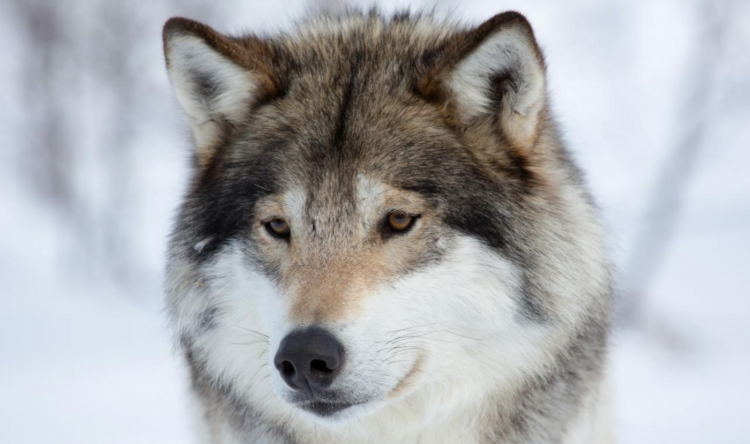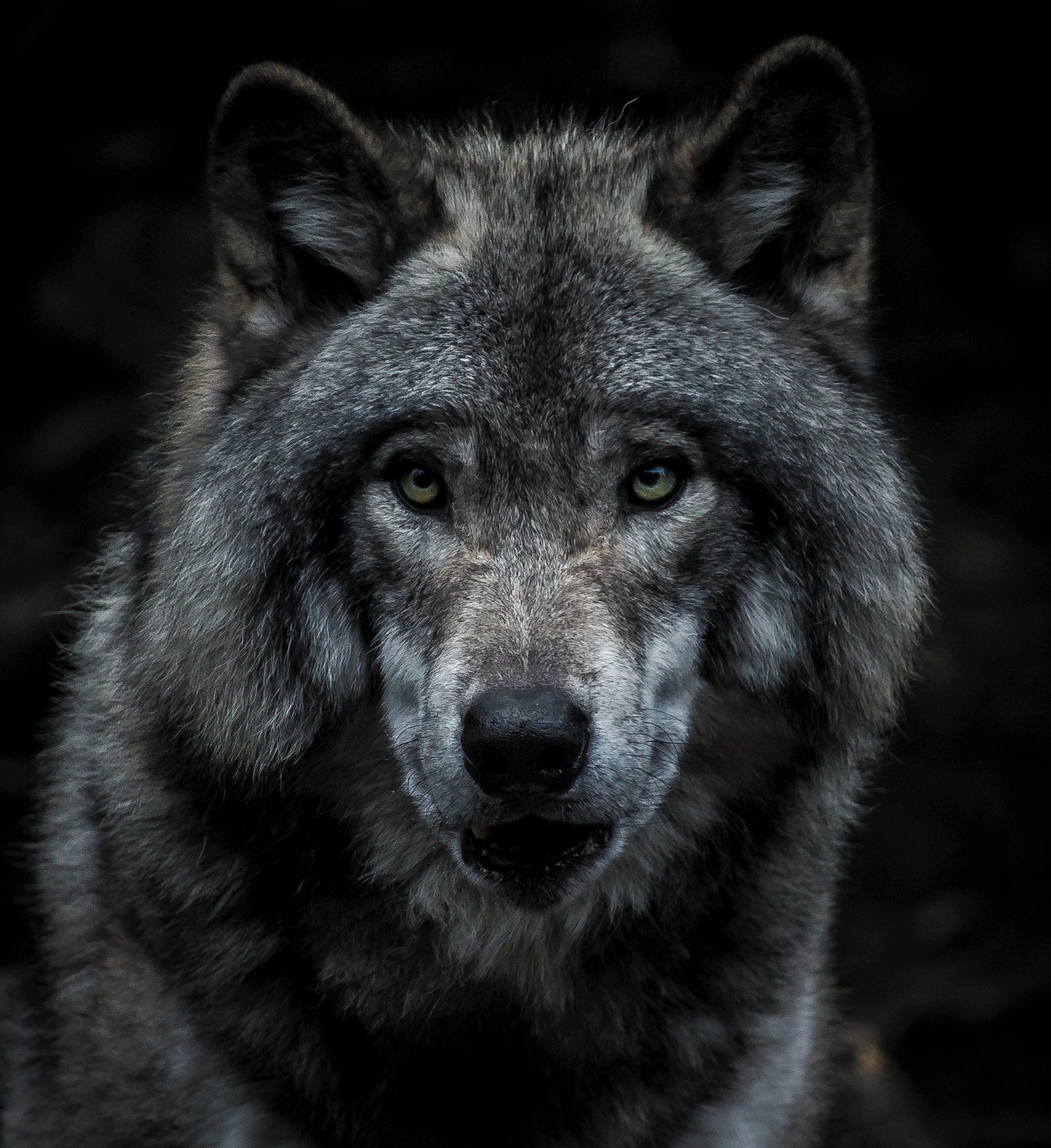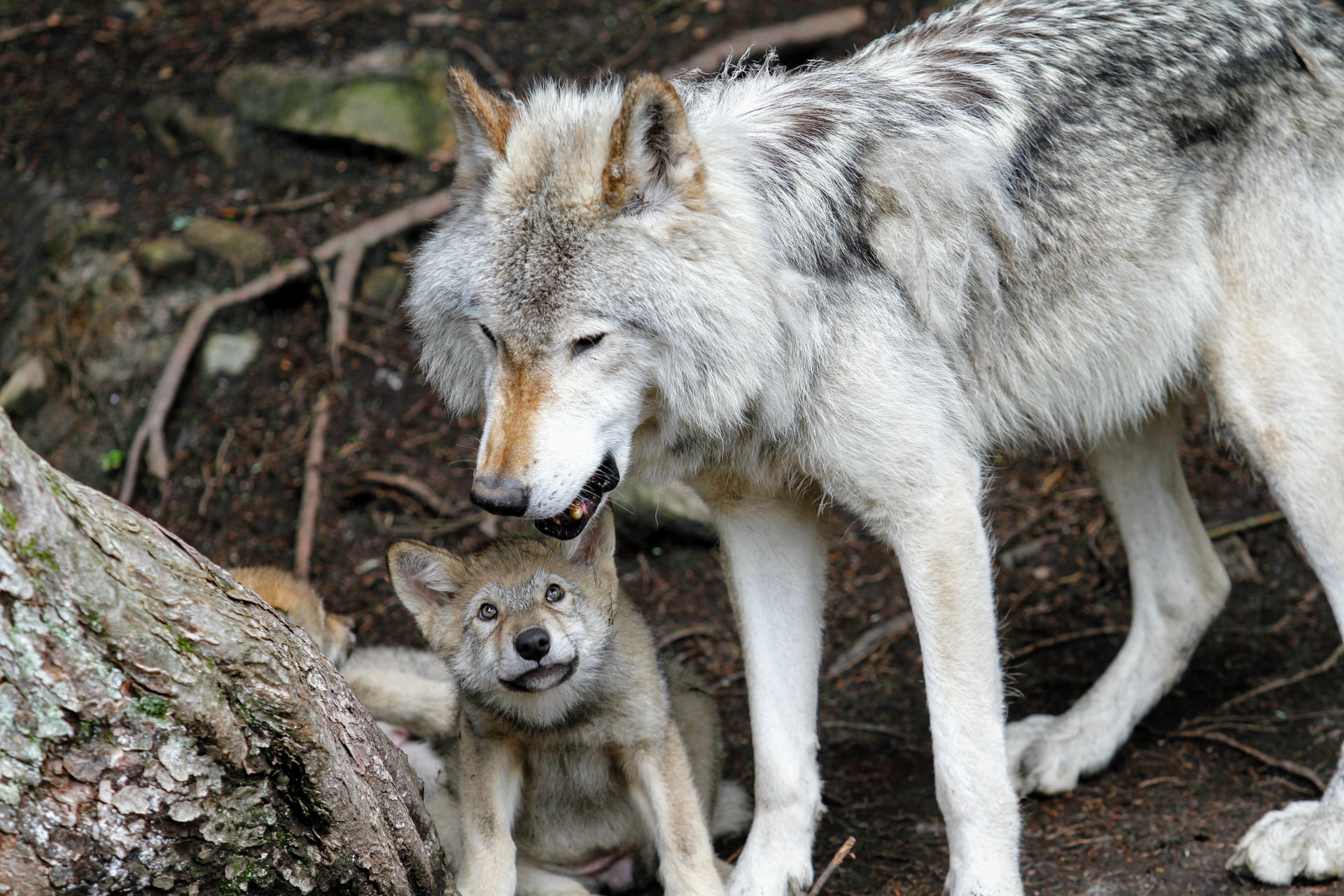Our Enemy the Wolf

“Wolves fail to hide their integrity just like the way men fail to hide their own animality.” — Munia Khan
Imagine a world where nature would remain a priority. A context where all animals have the same status, one which enhances their importance for the balance of specific ecosystems. Humans have taken a very important place on Earth, impacting almost every environment.
At this crucial time when scientists are talking about the 6th mass extinction, it sounds like a great opportunity to think of how human societies and the wild could live in harmony. Human behavior has a serious impact on various ecosystems and most of the time it is synonymous of negative consequences. This can sometimes be explained by several influences and already drawn ideas.
Wolves, through the background of their relationship with humans, are exemplifying this paradox. Considered as dangerous and violent, they actually hide many qualities and represent an optimistic example which highlights possible solutions for this not-so-crazy idea of living together.
Photo credit: Marc-Olivier Jodoin/UnsplashAt the mention of wolves, children have shuddered for years. This can be explained by the fact that this canine, omnipresent in fairy tales, retains a negative reputation which has lasted for centuries now. Do you remember these childhood stories about wolves? In my personal experience, they were never pictured in a different way than a threatening, aggressive character, depicted with the negative aspects of human nature.
This explains some of the reasons why humans were influenced to consider wolves in a negative way. However, it actually prevented humans to understand wolves. Moreover, it hides a completely different truth about these animals. Thanks to several scientific studies, we can now adopt a more positive approach. Indeed, according to National Geographic, ecosystems actually benefit from the presence of wolves.
The past half-century is rich of many findings. One of the most remarkable scientific discoveries has been the widespread of trophic cascades. The term « trophic cascade » refers to an ecological phenomenon which implies indirect interactions that control entire ecosystems. This ecological process happens when predators limit the density and change the behavior of their prey, or on the contrary when, in absence of predators, the density of the prey rises.
This predators’ impact has an indirect consequence on the next lower trophic level, by enhancing the primary producers or contrarily reducing them. In a three-level food chain, a decrease in carnivores causes an increase in herbivores and so a decrease in primary producers such as plants and phytoplankton. What recently happened in the Yellowstone National Park remains a perfect example of this ecological process.
Photo credit : Yannick Menard/UnsplashWolves, who disappeared from the park in the 1920’s, were reintroduced in 1995. It is a widespread fact that wolves are carnivorous predators. However, we are slightly less aware that they also play a positive role for many others species.
To be more specific, for 70 years, wolves had been absent from the national park and during that time the number of deer had drastically risen. Unfortunately, human efforts to control them could not avoid the herbivores to graze much of the vegetation, reducing it to almost nothing.
Nevertheless, as soon as few wolves were reintroduced, their impact began to show amazing consequences. First, they naturally killed some of the deer but more significantly, wolves actually changed the herbivores’ behavior. In other words, the deer were, in reaction to the predator's presence, avoiding specific parts of the park where they could get trapped more easily, especially the bare valleys and the gorges.
As a consequence, these places started to regenerate. Uncovered from vegetation, bare valleys became forests where aspen, willow and cottonwood flourished rapidly. Then, songbird and migratory bird populations increased.
As soon as the number of trees rose up, the population of beavers also started to raise. Beavers are known as ecosystem engineers. Indeed, they create habitats for several species such as otters, ducks, fishes, muskrats, amphibians and reptiles by building dams in the rivers.
Moreover, as a consequence of wolves hunting coyotes, the number of rabbits and mice started to increase. As a result of this phenomenon, hawk, fox, weasel and badger populations also began to rise.
The carcasses left by the wolves attracted opportunistic scavengers such as ravens and bald eagles. Bears also fed on carrion, but the major reason of their increasing number is explained by the growth of berries on the regenerating shrubs. The presence of bears also emphasized the impact of wolves by hunting some of the herbivores’ calves for instance, therefore participating in reducing their number.
All of these positive changes remain consequences of the wolves presence in the park. However, wolves have shown another remarkable effect, one much more surprising. They actually modified the behavior of the rivers.
In other words, streams of water started to meander less, the channels narrowed and more riffle sections appeared. In addition, there is less erosion and several pools formed. These various transformations definitely remain positive for wildlife habitats. The rivers became more fixed in their course thanks to the recovering forests which help stabilizing the shores. Furthermore, the regenerating vegetation on the valleys permit to reduce soil erosion.
These transformations show the tremendous impacts of wolves on the Yellowstone National Park’s ecosystems, which even modified the physical geography of the reserve.
Photo credit: M L/UnsplashThe natural recolonization of wolves provokes conflicts in society, especially when the predators move towards populated areas. Indeed, livestock farmers accuse wolves for being responsible for the loss of several animals, negatively impacting the breeders’ efforts.
This is where a paradoxical situation occurs. In fact, according to The Journal of Applied Ecology, wolves actually prefer to hunt and feed on wild species. The main reason why these predators sometimes take the decision to attack flocks of sheep remains the lack of wild preys.
This sad fact is a consequence of the human impact on ecosystems. In other words, human colonization of the environment and their activities, such as pollution and hunting, drastically reduce the number of wild species.
As a result, predators struggle to survive and have to hunt what is left which, once again, is considered human property. However, scientists highlight many possible solutions with the aim for both species to live together.
First, the number of sheep by flocks should be reduced in order for the shepherds to protect livestock in an easier way, as well as leaving free areas for wild species.
Secondly, we are now aware that wolves, as many other wild animals, travel a lot during their lifetime, on what scientists call “biological corridors”. A biological corridor is an area which links natural habitats to one another, enabling wild species to travel, as well as participating in a healthy genetic mixing among populations. Leaving these areas free from human presence would let wild animals enhance perfectly balanced ecosystems and create a natural harmony.
Knowledge, consciousness and understanding about our common environment are all keys allowing us to write a different story. A story which could begin with the signature of a peace pact between humans and the wild.










